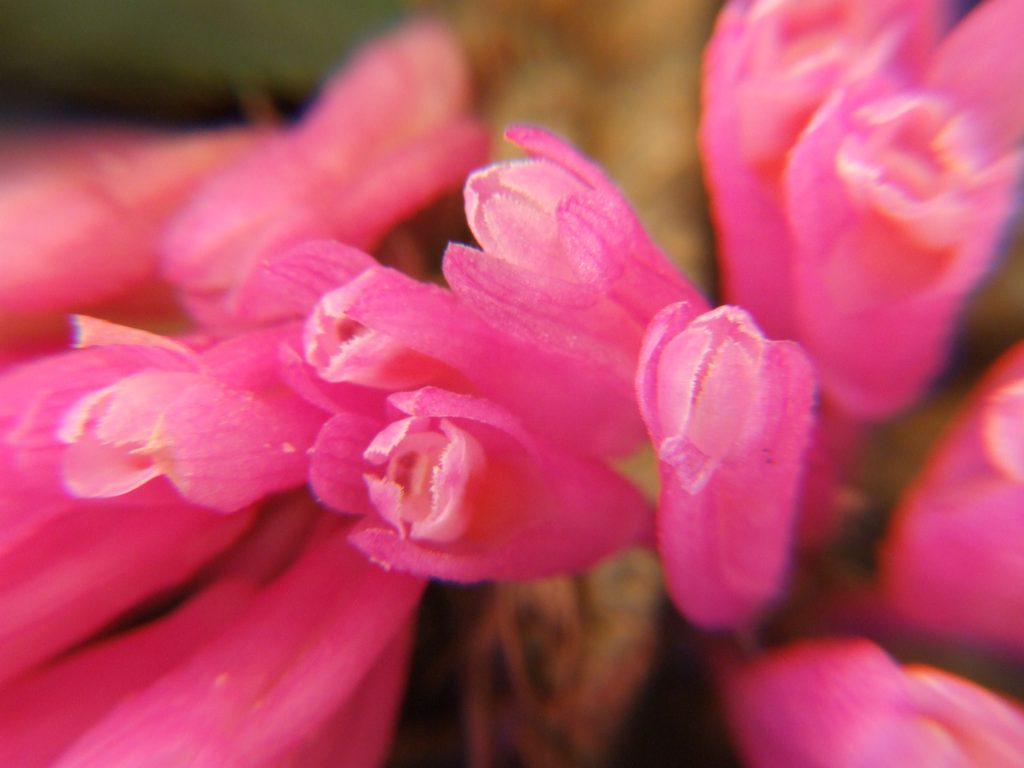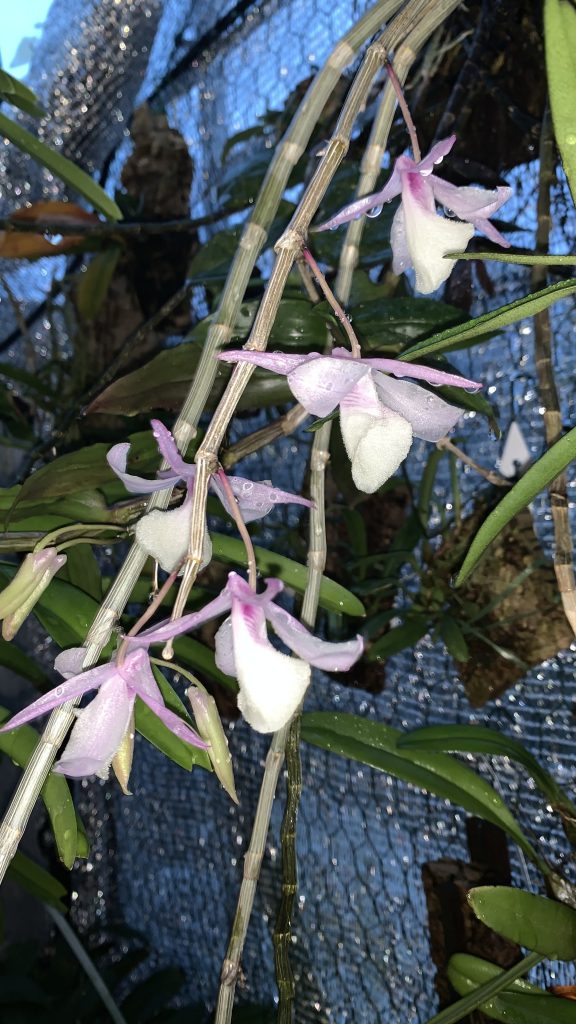Sheffield & District Orchid Society

The genus Dendrobium is one of the largest in the orchid family and includes more than 1000 species. Dendrobiums occur naturally from India to Japan, south to Australia and east to some of the Pacific islands. Their altitudinal range is from sea-level to more than 3000 m. Plant size covers the full gamut from true miniatures to monsters more than 5 m tall. With their mostly colourful and attractive flowers, Dendrobiums have always been popular in cultivation and although commonly available plants tend to be hybrids, many fine species are also propagated and grown.
In general terms Dendrobiums like plenty of light and air movement, and when actively growing, a lot of water. At one extreme are those plants such as D. aphyllum which are fully deciduous and thus kept mostly dry for part of the year and at the other are those like D. cuthbertsonii which come from high altitudes and must never be dry for more than a day or two. As a general rule, plants which bear leaves throughout the year will appreciate regular watering but much less frequently when growth slows down or stops during the winter months.

Small plants may be mounted or grown in free draining pots whereas larger ones whose natural habit is pendulous are better mounted or planted in hanging containers to allow better root development. Most other plants will form compact upright clumps which are most easily accommodated in pots.
Suitable temperatures will depend on the origins of particular plants. Those from tropical montane habitats or temperate regions of Australia will prefer a winter minimum of around 10 °C but will tolerate less but with a rise during the day and a few degrees warmer during the growing season. Plants from monsoon climates will experience dry days for part of the year but night time humidity is high as are light levels during the day so some water is required even in winter just to avoid shrivelling.
Popular hybrids derived from D. nobile, an ideal and common house plant, are ideal to grow on windowsills and in the home. They are a monsoon plant, so need to grow strongly after spring flowering, with planty of water and feed so that new growths are fully formed by the time winter comes with cooler and drier conditions. These will encourage the formation of the next flower buds which appear in clusters on stem nodes. They like quite high light and can tolerate coolish temperatures in winter.
Hybrids derived from D. bigibbum produce sprays of long lasting flat phalaenopsis-type blooms from the upper stem nodes but are truly tropical in their needs which mean a winter minimum of 15°C with a day rise and 18°C minimum during growth.
For those who would like to know more, ‘Dendrobium and its relatives’ by Lavarack, Harris and Stocker, and published by Timber Press in 2006 cannot be too highly recommended.
By David Menzies